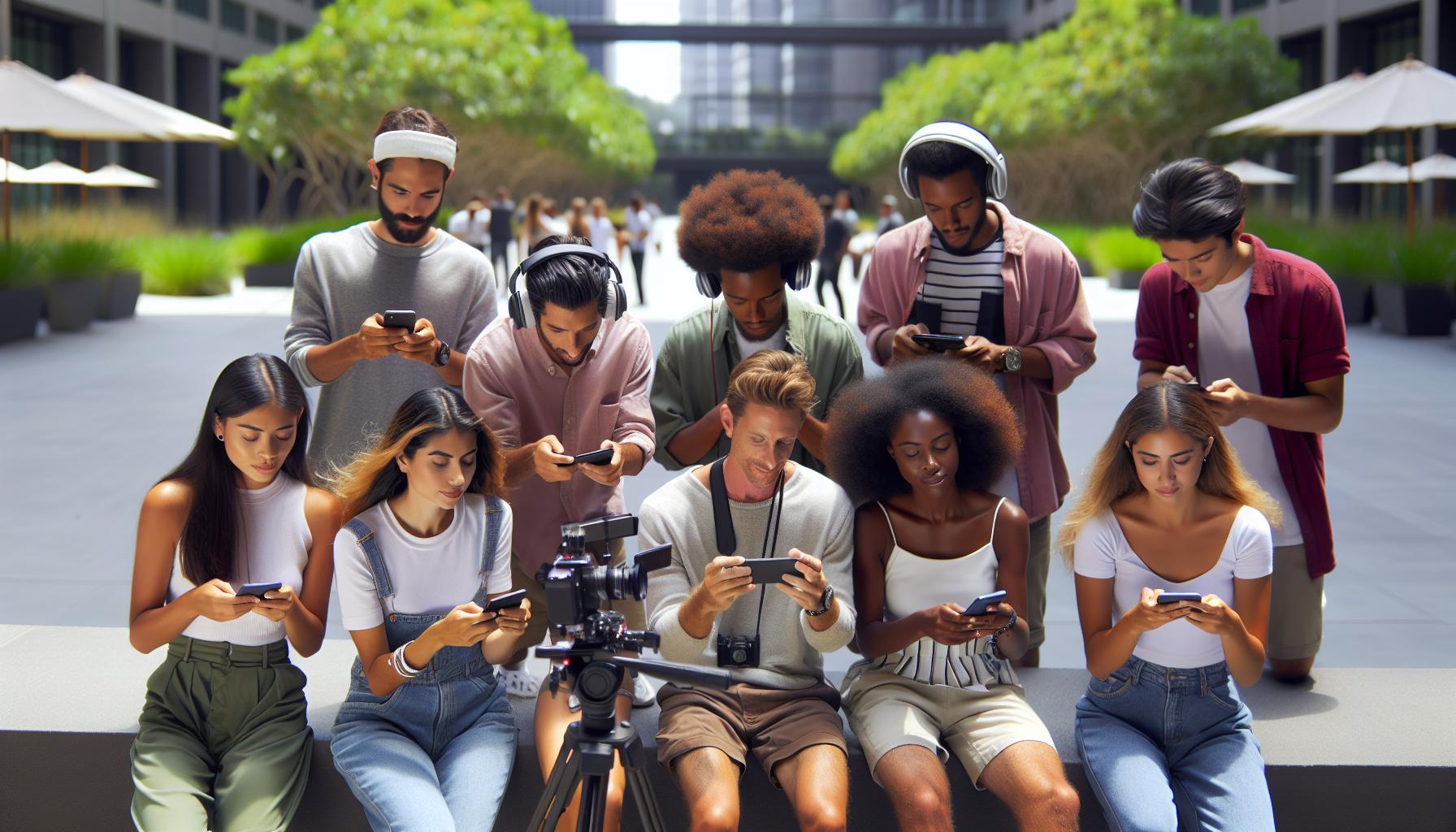In 2017, social media took a wild turn, and it wasn’t just the selfies that got a makeover. Platforms evolved faster than a cat meme goes viral, introducing trends that left marketers scrambling to keep up. From the rise of live streaming to the explosion of ephemeral content, this year proved that staying relevant in the digital world is like trying to catch a greased pig—challenging but oh-so-rewarding.
2017 Trends Social Media
In 2017, social media underwent significant transformation across various platforms. Live streaming gained immense traction, with platforms like Facebook and Instagram championing real-time content. Marketers faced new hurdles as they adjusted strategies to include this format and engage audiences effectively.
Ephemeral content emerged as another trend, allowing users to share temporary posts that disappear after a set period. Snapchat spearheaded this movement, influencing competitors like Instagram to adopt similar features. Brands quickly recognized the advantages of this content type for fostering authenticity and urgency.
User-generated content also became more prominent during this year. Brands encouraged followers to share their experiences, creating a sense of community and trust. Engaging with users in this manner strengthened brand loyalty and expanded reach.
Influencer marketing continued to escalate, emphasizing the importance of trust and credibility. Companies leveraged influencers to promote products in relatable ways, making recommendations more appealing to their audiences. The effectiveness of this strategy drove many brands to invest in long-term partnerships.
Artificial intelligence and chatbots made their presence felt in social media marketing. These tools enhanced customer service and streamlined communication, allowing brands to respond promptly to inquiries. Automation became essential for efficient interaction in increasingly busy digital spaces.
Overall, 2017 marked a pivotal year for social media, highlighting the necessity for brands to adapt to evolving trends. Emphasis on real-time and temporary content reshaped engagement strategies, driving marketers to innovate continuously. The landscape presented both challenges and opportunities, prompting businesses to explore creative approaches for connecting with audiences.
Major Social Media Platforms in 2017

2017 trends social media saw significant shifts among major social media platforms, with each adapting to current trends and user expectations. The ever-changing landscape challenged brands to stay relevant and engage their audiences effectively.
Facebook’s Evolution
Facebook continued to evolve, prioritizing video content and live streaming features. The introduction of Facebook Live allowed users to broadcast events in real time, driving engagement and interaction. Additionally, the platform enhanced its algorithm, showing users more relevant content while decreasing organic reach for businesses. As a result, brands increasingly focused on paid advertising to ensure visibility. This shift pushed them to create more engaging, shareable content. Despite these challenges, Facebook maintained its dominance, with over 2 billion monthly active users driving vast advertising opportunities for marketers.
Instagram’s Rise
Instagram experienced remarkable growth in 2017, fueled by its emphasis on visual content. The platform introduced Stories, a feature encouraging users to share ephemeral content, which became extremely popular. With over 250 million daily users on Stories, brands recognized the potential to connect with audiences in a more authentic manner. Influencer marketing thrived, as businesses collaborated with personalities to showcase products through compelling visuals. Integrating shopping features within posts allowed users to purchase items directly, further solidifying Instagram’s position as a critical player in e-commerce and brand marketing.
Twitter’s Challenges
Twitter faced several challenges in 2017, primarily regarding user engagement and platform growth. The company struggled with its user base, which remained relatively stagnant compared to competitors. Although Twitter introduced new features, such as threaded conversations and an expanded character limit, these initiatives generated mixed responses. Many brands found it difficult to break through the noise, leading to decreased organic reach. Despite efforts to address harassment issues, concerns persisted, affecting user experience. While Twitter maintained its relevance for real-time news and updates, it needed to innovate to capture a wider audience and enhance overall engagement.
Key 2017 Trends Social Media

In 2017, significant trends transformed social media landscapes, pushing brands to adapt their strategies.
Video Content Dominance
Video content became crucial for engagement. Platforms actively prioritized videos, with Facebook emphasizing live streaming via Facebook Live. Marketers faced the challenge of creating captivating video content to capture audiences’ attention. Instagram also encouraged video usage through Stories, enhancing brand authenticity. Engagement rates surged as users gravitated toward dynamic content formats, validating the focus on video strategies for brands aiming for visibility.
The Importance of Influencer Marketing
Influencer marketing surged in importance during 2017. Brands began leveraging influencers to establish relatability and trust with consumers. Influencers created content that resonated with audiences, fostering a sense of community. Companies recognized that authentic endorsements significantly impacted purchasing decisions. Trusted figures became vital assets in navigating crowded markets, allowing brands to connect more effectively and elevating engagement through personal storytelling.
User-Generated Content
User-generated content emerged as a pivotal trend in 2017. Brands encouraged audiences to share experiences, fostering community involvement. User-generated content elevated brand loyalty and authenticity, as customers felt valued and heard. Campaigns utilizing customer-created content showcased authentic interactions, strengthening brand-consumer relationships. Marketers realized engaging customers in content creation promoted organic growth and proved essential in building trust within the digital space.
The Impact of 2017 Trends Social Media on Businesses

Social media trends from 2017 significantly influenced business strategies. Companies adapted quickly to remain competitive.
Changing Marketing Strategies
Marketers shifted their focus towards video content, recognizing its growing popularity on platforms like Facebook and Instagram. Live streaming became essential for engaging audiences in real time. Additionally, the adoption of Instagram Stories allowed brands to share authentic moments, building stronger connections with followers. As organic reach declined, brands integrated paid advertising into their strategies to maximize visibility. Influencer marketing evolved into a key tactic, enabling businesses to partner with trusted figures for authentic promotion. Content produced by users also gained traction, fostering a sense of community alongside brand advocacy. This dynamic transformation necessitated continuous adjustments in marketing approaches.
Customer Engagement Techniques
Engagement strategies in 2017 relied heavily on interactive content. Polls and questions on platforms like Instagram and Twitter encouraged audience participation, creating a sense of involvement. Brands began incorporating user-generated content into their marketing, empowering customers to share their experiences. By doing so, companies cultivated loyalty and authenticity. Furthermore, chatbots emerged as a vital tool for enhancing customer service, providing instant responses to inquiries. Businesses leveraged data analytics to understand audience behavior and preferences, tailoring content accordingly. Collectively, these engagement techniques revolutionized how brands connected with customers in the evolving social media landscape.
Shift in Marketing Strategies
The evolution of social media in 2017 set the stage for a dynamic shift in marketing strategies. Brands had to embrace new formats like live streaming and ephemeral content to stay connected with their audiences. User-generated content and influencer marketing emerged as powerful tools for fostering community and authenticity.
As platforms adapted to these trends, businesses found themselves in a constant state of innovation. The increasing reliance on video content and interactive engagement methods reshaped how brands communicated with customers. This adaptability became essential for maintaining relevance in an ever-changing digital landscape. The lessons learned in 2017 continue to influence social media strategies today, emphasizing the need for brands to stay agile and responsive to emerging trends.

